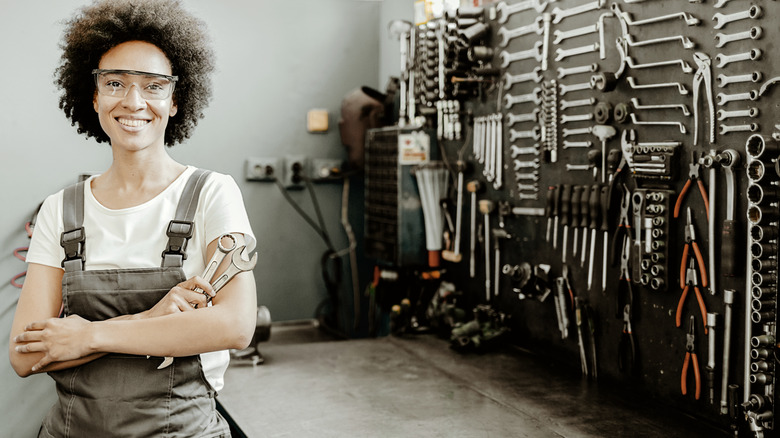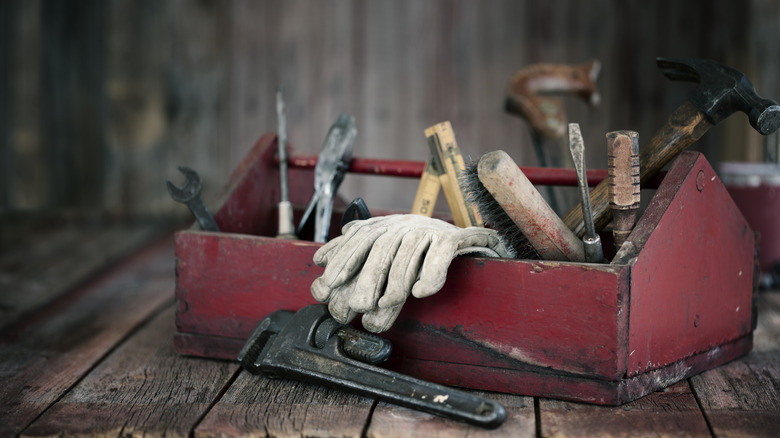The Conditioner Hack That'll Keep Your Tools Rust-Free
Conditioner comes in a variety of formulas and price points. Most people know conditioner is used after shampoo to soften and detangle your hair strands — but much less well-known is that it's also great for lots of other uses, including keeping rust at bay. For tools, faucets, and other metal susceptible to oxidation, a small amount of hair conditioner applied to the surface of the metal can make all the difference.
Rust is an insidious destroyer of tools, eating away at them over time. It can even leave them brittle and at risk of breaking. What's worse, the sharp edges caused by rust damage might increase your chances of sustaining a puncture wound that leads to tetanus — or at the very least a painful shot. Removing rust after it's already set in can be extremely difficult, if not hopeless — many items are better off being replaced altogether at that point. As such, it's wise to invest in the proverbial ounce of prevention that conditioner can provide.
What makes conditioner special?
Rust forms when metal containing iron is exposed to moisture — even the moisture in the air. As time goes on, any humidity or dampness in the area can wreak havoc on metal tools. That's why older tools are more likely to be rusty. Since conditioner works by sealing the hair shaft, preventing moisture from leaching away from your hair and into the air, it can also work as a sealant against moisture for other materials. The surfactants in conditioner — part of their chemical makeup — are hydrophobic, meaning they repel water. Tools that can't get wet can't rust.
A professional may opt for a far more specialized and expensive product, but for the home handyman (or woman) who only uses their tools for the occasional repair or DIY project, conditioner is an excellent option that most people already have on hand. And, it only takes a small amount to make a world of difference.
How to treat your tools with conditioner to stave off rust
Proper tool maintenance is vital to prevent damage and deterioration, ensuring your tools enjoy an extended, productive lifespan. Luckily, it's easy to keep your tools in tip-top shape with very little effort.After each use, clean your tools of all dust, grease, and debris, and dry them thoroughly. Then take a small dab of conditioner and clean towel. Work the conditioner into a thin layer over all the metal parts, making sure to cover every crease and crevice. Hammers, socket wrenches, pliers and saws all have intricate corners or grooves that can be easily overlooked if you're not careful. (In the case of sharp objects, be sure to wear appropriate protective gear when handling them). Remember that drill bits and their tiny details need to be cared for too.
Above and beyond that regular maintenance, it's also a good idea to give all your tools a good cleaning once a year. And don't forget this hack can also be used on things like your gardening tools! A small amount of vigilance can keep all your tools in excellent working order for years and years. All with a little conditioner for your hair.


